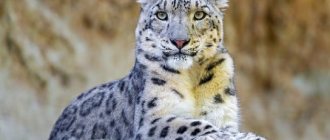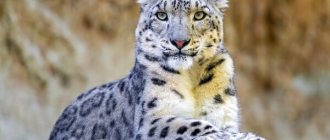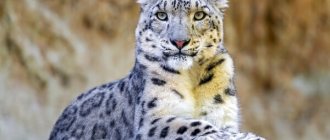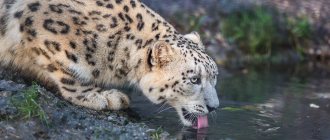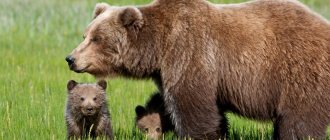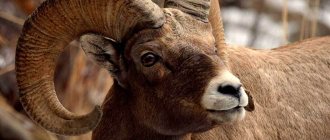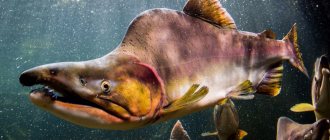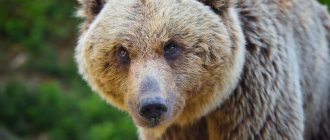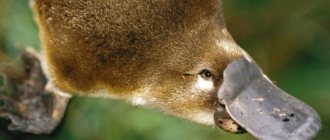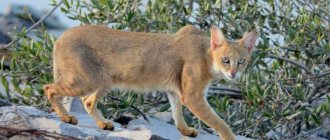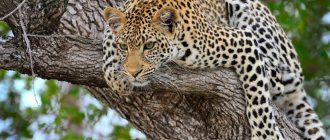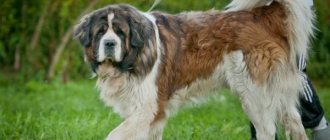Snow leopards (Panthera Uncia) are large wild cats that inhabit the Asian mountains. They are listed as endangered on the IUCN Red List because scientists estimate the population size to be less than ten thousand adult predators and a significant decline in this number is predicted by mid-century. The animals are threatened by poaching and habitat destruction due to infrastructure development.
History of the discovery of the snow leopard species
Both the Latinized specific epithet uncia and the occasional English "Ounce" are names derived from Old French once used for the European lynx. The species name arose from a false split from an earlier variant of lynx, lonce – where lonce was interpreted as l'once, in which l' is a shortened form of the French definite article la (equivalent to the English "the"). This name, as well as the English version "Ounce", came to be used for other lynx-sized cats and eventually including the Snow Leopard.
The word "panther" comes from the classical Latin panther, and originally from the ancient Greek πάνθηρ. Read the article about panthers.
Names of the Snow Leopard at different times:
- "Felis uncia" is the scientific name used by Johann Christian Daniel von Schreber in 1777 when describing the Snow Leopard, based on an earlier description by Georges-Louis Leclerc, Comte de Buffon, suggesting that the cat originated in Barbary, Persia, East India and China .
- "Ounce" was proposed by John Edward Gray in 1854, who grouped Asian cats with long, thick tails into this genus.
- The name "Felis irbis" was introduced by Christian Gottfried Ehrenberg in 1830, the scientist described the skin of a female Snow Leopard found in the Altai Mountains in Siberia. He also explained that some leopard skins had previously been mistakenly identified as snow leopard skins.
- Felis uncioides proposed by Thomas Horsfield in 1855 for a Snow Leopard skin donated to the East India Company Museum.
- The name "Uncia uncia" was used by Reginald Innes Pocock in 1930 when he was examining the skins and skulls of panther species from Asia. He also described the morphological differences between the skins of the leopard (P. pardus) and the snow leopard.
- The name “Panthera baikalensis-romanii” was proposed by Russian scientists in 2000 to describe the dark brown Snow Leopard from the Petrovsko-Zabaikalsky region of southern Transbaikalia.
According to the results of phylogenetic studies, the snow leopard was subordinate to the genus Panthera. Modern name Panthera uncia.
The results of a phylogeographic study published in September 2022 indicate that three subspecies should be recognized: P. u. uncia in the Pamir Mountains, P. u. uncioides in the Himalayas and Qinghai and P. u. irbis in Mongolia.
Based on phylogenetic analysis of DNA sequences collected from living cats, the snow leopard forms a sister group to the tiger. The genetic divergence time of this group is estimated at 4.62–1.82 million years.
The snow leopard and tiger probably diverged in development between 3.7 and 2.7 million years ago. The panther most likely originates from northern Central Asia. Excavations of Panthera blytheae in western Tibet Ngarei are the oldest known species of Panthera and the characteristics of the skull exhibits are similar to Snow Leopards.
A 2016 study found that the mitochondrial genomes of snow leopards, lions and leopards are more similar to each other than their nuclear genomes, indicating that the ancestors of snow leopards hybridized with genes from lions and leopards at some point in their evolution.
Description
This predatory animal lives in the mountains and belongs to the cat family. In the 17th century, people often confused them with leopards, but later they were classified as a separate species. The first scientific description of the snow leopard was compiled in 1775 by naturalist Johann Schreber.
Snow leopards are easy to distinguish from other cats due to their short legs and light color. Also, most of them look quite massive, as if they are overweight, but this is a deceptive misconception that appears due to the large amount of fur.
Mr. Cat recommends: description, characteristics
The Snow Leopard's fur is whitish to gray with black spots on the head and neck, but larger rosettes are located on the back, sides, and bushy tail. The belly is whitish.
His eyes are pale green or gray in color. The animal's muzzle is short and its forehead is convex. The nasal cavities are large. The fur is thick, the hairs are from 5 to 12 cm long.
The snow leopard's body is stocky, with short legs, slightly smaller than other cats of the genus Panthera. Cats reach a height at the withers of 56 cm and a size from head to base of the tail from 75 to 150 cm. The tail of a snow cat is from 80 to 105 cm long.
The snow leopard weighs from 22 to 55 kg, sometimes a large male reaches 75 kg, and a small female weighs less than 25 kg.
The predator's fangs reach a length of 28.6 mm and are thinner than those of other panther species. Relative to the length of the skull and the width of the palate, the snow leopard has large nasal openings that allow for increased volume of inhaled air and, at the same time, this serves to warm and humidify cold, dry air.
The snow leopard exhibits several adaptations for living in a cold mountain environment. Its small, rounded ears help minimize heat loss. Wide paws distribute body weight well when walking in snow and have fur on the underside of the balls of the feet to increase traction on steep and unstable surfaces, which also helps minimize heat loss.
The snow cat's long, flexible tail helps maintain balance in rocky terrain. It is very thick due to the accumulation of fat and is densely covered with fur, allowing the snow leopard to use it as a blanket to protect its face while sleeping.
Appearance and features
Photo: Animal snow leopard
The snow leopard is an animal of incredible beauty and grace. The body length of one adult individual is 1-1.4 meters. The animals have a very long tail, the length of which is equal to the length of the body. Tail length is 0.8-1 meter. The tail plays a very important role. Animals use it to maintain balance in mountainous areas and to warm their front and hind paws in snow and frost. The weight of one adult individual is 30-50 kilograms.
Sexual dimorphism is not expressed, but males are slightly larger than females. Predators have large front paws with round pads measuring 1*1 cm. Long hind feet ensure fast movement among mountain peaks and deft, graceful jumps. The limbs are not very long, but the paws are thick and powerful. The paws have retractable claws. Thanks to this, there are no traces of claws left in the snow where the graceful predator passed.
The feline predator has a round head, but with small, triangular ears. In winter, in thick, long fur, they are practically invisible. Animals have very expressive, round eyes. The snow leopard has long, thin whiskers. Their length reaches just over ten centimeters.
Interesting fact. The snow leopard has very long and thick fur, which keeps it warm in harsh climates. The length of the coat reaches 50-60 centimeters.
The area of the spinal column and the lateral surface of the body are gray, close to white. The abdominal area, inner surface of the limbs and lower abdomen have a lighter tone. The unique color is provided by ring-shaped dark, almost black rings. Inside these rings are smaller rings. The smallest circles are located in the head area. Gradually, from the head, along the neck and body to the tail, the size increases.
The largest rings are located in the neck and limbs. On the area of the back and tail, the rings merge, forming transverse stripes. The tip of the tail is always black. The color of winter fur is smoky gray with an orange tint. This color allows them to remain unnoticed by steep rocks and snowdrifts. By summer, the coat becomes light, almost white.
Where the Snow Leopard Lives in Russia and Other Places
Before 2003, the total number of wild snow leopards ranged from 4,080 to 6,500 individuals. In 2016, the cat's population was estimated at 4,678-8,745 individuals, indicating that the total number of snow leopards was greater than previously thought.
| A country | Habitat area, km2 | Estimated population size |
| Afghanistan | 50000 | 50-200 |
| Butane | 15000 | 100-200 |
| China | 1100000 | 4500 |
| India | 75000 | 516-524 |
| Kazakhstan | 50000 | 100-120 |
| Kyrgyzstan | 105000 | 300-400 |
| Mongolia | 101000 | 1000 |
| Nepal | 30000 | 300-400 |
| Pakistan | 80000 | 250 |
| Altai-Sayan region, Russia | 20 000 | 70-90 |
| Tajikistan | 100000 | 250-280 |
| Uzbekistan | 10000 | 30-120 |
The snow leopard inhabits the alpine and subalpine zones at altitudes from 3000 to 4500 m from eastern Afghanistan to Mongolia and western China. In the northern countries of its range, the animal also lives at lower altitudes.
The Russian population of snow leopards spreads from the west of Lake Baikal through southern Siberia, in the Kunlun, Altai, Sayan and Tanna-Ole mountains, in the Tien Shan, through Kazakhstan, Kyrgyzstan, Tajikistan and Uzbekistan to the Hindu Kush in eastern Afghanistan, the Karakoram in northern Pakistan, in the Pamir Mountains and the high altitudes of the Himalayas in India, Nepal, Bhutan and the Tibetan Plateau.
In Mongolia, it is found in the mountains of the Mongolian and Gobi Altai and in the Khangai Mountains. In Tibet it is found as far as Altyn Tagh in the north.
The potential habitat of the Snow Leopard in the Indian Himalayas is estimated to be less than 90,000 square kilometers in the states of Jammu and Kashmir, Uttarakhand, Himachal Pradesh, Sikkim and Arunachal Pradesh, of which about 34,000 square kilometers are considered good habitat, and 14.4 % protected. In the early 1990s, the snow leopard population in India was estimated at approximately 200–600 individuals living in 25 protected areas.
In summer, Snow Leopards usually live above the tree line in mountain meadows and rocky areas at altitudes between 2,700 and 6,000 m. In winter, they descend into forests at altitudes of about 1,200 to 2,000 m.
Snow leopards easily cope with rocky, rugged terrain and can easily travel through snow up to 85 cm deep, although they prefer to use existing trails made by other animals.
Snow leopards were recorded using camera traps in 16 locations in the isolated Wakhan corridor in northeastern Afghanistan.
Today, Snow Leopards live in the following protected areas:
- Pakistan - national parks: Chitral Gol in the province of Khyber Pakhtunkhwa, Karakoram and Khanjerab in Gilgit-Baltistan, Deosai, as well as the Naltar Nature Reserve and several other protected areas, the area of which is less than 300 km².
- India - national parks: Hemis, Kishtwar, Dachigam, Pin Valley, Greater Himalayas, Nandadevi, Gangotri, Valley of Flowers; reserves: Gulmarg, Hirpora, Overa Aru and Kibber and some others.
- Nepal - Apite Nampu Nature Reserve, Dhorpatan Game Reserve, Shey Phoksundo and Annapurna National Parks and others.
- Bhutan – Jigme Dorji National Park, Centenary Wanchuk National Park, Bumdeling Nature Reserve.
- China - Komolangma and Sanjiangyuan National Nature Reserves on the Tibetan Plateau and Qilianshan in the Qilian Mountains, Tomur National Nature Reserve in the western Tien Shan Mountains.
- Uzbekistan – Chatkal State Nature Reserve, Zaamin and Ugam-Chatkal National Parks, Gissar National Reserve.
- Kazakhstan – Aksu-Zhabagly Nature Reserve.
- Kyrgyzstan – Sarychat-Ertash State Nature Reserve, Sary-Chelek State Biosphere Reserve, Besh-Tash National Natural Park, Kyrgyz-Ata and Karakol National Parks, Chychkan State Reserve.
- Tajikistan – Tajik National Park.
- Russia – Katunsky Nature Reserve, Sayano-Shushensky Nature Reserve.
- Mongolia – Altai-Tavan-Bogd, Tsambagarav-Uul, Khara-Us-Nur and Gobi-Gurvan-Saikhan national parks.
Peculiarities of behavior of snow leopards
Snow leopard vocalizations include meows, grunts, growls and moans. The beast can purr when exhaling, but is not capable of roaring, despite the fact that its hyoid bone is partially petrified.
Scientists believed that this incomplete ossification was necessary for panther cats to roar, but recent research has shown that the ability to roar depends on other morphological features of the larynx that are absent in the snow leopard.
The snow leopard is a solitary animal that shares a common space with its relatives. The predator is active mainly from dawn to early morning and again in the afternoon and early evenings.
Predators rest near rocks and ridges that provide vantage points and shade. In Nepal's Shay Phoksundo National Park, the home ranges of five adult radar snow leopards overlapped significantly, although they were rarely seen. Their individual territories ranged from 12 to 39 km².
Males moved between 0.5 and 5.45 km per day, and females between 0.2 and 2.25 km, measured along straight lines between survey points, but they often zigzag in steep terrain. However, they are also capable of traveling up to 7 km in one night.
Like other wild cats, snow leopards use scents to mark their territories and general travel routes. They most often create marks by scraping the soil with their hind legs before urinating, but they will also spray urine onto hidden areas of the stone.
Females and cubs usually stay together, and mothers keep the younger generation in shelters in the mountains for quite a long time.
Food preferences of snow leopards
Snow leopards are predators and actively hunt, but in difficult times they are capable of eating carrion.
The preferred wild prey species of snow leopards are Himalayan blue sheep (Pseudois nayaur), Himalayan tahr (Hemitragus jemlahicus), argali (Ovis ammon), markhor (Capra falconeri) and wild goats (C. aegagrus). The snow leopard also preys on livestock.
The snow cat prefers prey weighing 36 to 76 kg, but also hunts small mammals such as the marmot, pika and various species of voles.
The diet of the Snow Leopard varies depending on its range and season and is related to the availability of prey. In the Himalayas, the snow leopard preys mainly on Himalayan blue sheep and Siberian ibex (Capra sibirica). In the Karakoram, Tien Shan, Altai and Mongolia mountains, its main prey are Siberian ibex, Thorold deer (Cervus albirostris), Siberian roe deer (Capreolus pygargus) and argali. Other available species that are potential wild cat prey include the red panda, wild boar, langur monkey, snow cock and Chukar partridge.
Snow leopards prefer to attack prey from above, using rough terrain to conceal their approach to potential prey.
They actively pursue their prey up steep mountain slopes, using jumping momentum to drive animals up to 300 m away. Snowy predators kill with a bite to the neck and can drag prey to safety before feeding.
Snow leopards consume all edible parts of a carcass and can survive on a single Himalayan blue sheep for two weeks before needing to hunt again. The annual prey requirement is 20-30 adult blue sheep.
The snow leopard is capable of killing most animals in its range, with the possible exception of an adult male yak.
The snow cat also eats a significant amount of plant matter, including grasses and twigs.
Where the snow leopard preys on livestock, the predator comes into conflict with people. However, even in Mongolia, where wild prey has declined and human interaction is common, livestock, mainly sheep, make up less than 20% of the snow leopard's diet. Herders often kill bighorn cats to prevent them from taking their livestock.
Loss of carnivores due to overkill of livestock and poaching are the main factors in the decline of the Snow Leopard. At the same time, the snow leopard does not attack people and is the least aggressive towards humans of all the large cats.
These predators are easily driven away from livestock, readily abandon their prey when threatened, and may not even defend themselves when attacked.
Puberty and reproduction
Snow leopards become sexually mature after two to three years and typically live 15-18 years in the wild, and up to 25 years in captivity. A female's estrus typically lasts between five and eight days, and males generally do not seek another partner after mating, probably because the short estrus period does not give them enough time. Snow leopards mate in the usual cat-like position, 12 to 36 times a day.
Snow leopards are unique among big cats in that they have a well-defined birth peak. They usually mate at the end of winter, which is marked by a noticeable increase in marks and an active call for females. Females have a gestation period of 90–100 days, so young are born from April to June.
The generation length of the Snow Leopard is eight years.
The mother gives birth to her litter in a rocky den or crevice lined with fur litter. The number of cubs varies from one to five, but the average is usually two kittens.
The cubs are blind and helpless at birth, although they already have thick fur and weigh from 320 to 567 g. Their eyes open after about seven days, and they can walk after five weeks and are completely weaned at the tenth week. They also have black spots on their fur when they are born, which turn into rosettes as they mature.
Snow leopard kittens leave the den when they are about two to four months old, but they remain with their mother until they are fully independent, which occurs after about 18 to 22 months.
Young snow leopards disperse over considerable distances, even crossing wide plains to find new hunting grounds. This likely helps reduce the inbreeding that would otherwise be common in their relatively isolated environment.
Features of character and lifestyle
Photo: Snow leopard Red Book
Snow leopards prefer a solitary lifestyle. Each adult individual chooses a specific habitat, which is prohibited for other representatives of the species. If other individuals of a given family enter the habitat, regardless of gender, they do not show pronounced aggression. The habitat of one individual ranges from 20 to 150 square kilometers.
Each individual marks its territory with marks with a specific smell, as well as claw marks on trees. In conditions of existence in national parks or reserves, where animals are limited in territory, they try to stay at a distance of at least two kilometers from each other. In rare exceptions, snow leopards exist in pairs.
It is most active at night. It goes hunting at dawn or after dark. Most often, he develops a specific route and moves only along it in search of food. The route consists of watering places and ungulate pastures. In the process of covering its route, it does not miss the opportunity to catch smaller food.
The snow leopard has landmarks on each route. These may include waterfalls, rivers, streams, high mountain peaks or rocks. Completing the chosen route takes from one to several days. During this period of time, the predator covers from ten to thirty kilometers.
In winter, when the thickness of the snow cover increases, the predator is forced to first trample its paths in order to be able to hunt. This can play a cruel joke on him, since the trails visible in the snow and the habit of not changing their route make them easy prey for poachers. Animals are capable of developing great speed and, thanks to their long feet, can jump 10-15 meters in length.
Interesting fact: The snow leopard is the only member of the cat family that does not growl. They often make long sounds. This is especially true for females during marriage. With this sound, which is formed by the passage of air masses through the nostrils, females notify males of their location.
This sound is also used as a greeting between individuals. Facial expressions and direct contact are also used as communication. In order to demonstrate strength, animals open their mouths wide, exposing long fangs. If predators are in a good mood and peaceful, they open their mouths slightly without showing fangs, and also wrinkle their noses.
Keeping snow leopards in captivity
In 2008, there were approximately 600 Snow Leopards in zoos around the world. At the Richmond Metropolitan Zoo in Virginia, in the United States of America, snow leopard cubs were born in 2016.
Much progress has been made in ensuring the survival of the Snow Leopard and it has been successfully bred in captivity. Females usually give birth to two to three young per litter, but in some cases can produce up to seven.
Population and species status
Photo: Snow leopard kittens
Today this amazing and very graceful predator is on the verge of complete extinction. This status of this animal species is due to a number of specific reasons. Reasons for the extinction of the species:
- The habitats of individual groups of animals are very remote from each other;
- Slow reproduction rates;
- Depletion of food supply – reduction in the number of artiodactyls;
- Poaching;
- Very late puberty.
According to the World Animal Protection Organization, there are from 3 to 7 thousand individuals in the world. Another 1.5-2 thousand animals exist in zoos and national parks. According to rough statistics, the number of individuals in Russia has decreased by a third over the past decade. The extinction of the species was also facilitated by a sharp reduction in the number of sexually mature females.
Attacks on people
Snow leopard attacks on humans are extremely rare, with only two known cases. On July 12, 1940, in the Maloalmaatinsky Gorge near Almaty, a rabid Snow Leopard attacked two people during the day and caused them serious injuries. In the second case, near Almaty, an old, toothless, emaciated snow leopard unsuccessfully attacked a passerby in the winter; it was captured and taken to a local village.
In the episode of the film “Natural World” (2008) “Snow Leopard – Myths and Reality” there is an interesting interview with a married couple of Pakistani farmers. The woman was shocked by the snow leopard that escaped from the pen where she was feeding the cattle; the wild cat did not attack her, despite her fainting and helplessness.
How much does a Snow Leopard cost?
The main threat to Snow Leopard populations is poaching and the illegal trade in pelts and body parts. In China, from 103 to 236 animals are killed annually by poachers, in Mongolia from 34 to 53, in Pakistan from 23 to 53, in India from 21 to 45 and in Tajikistan from 20 to 25. Poaching is associated with a reduction in production and the destruction of livestock.
Greenhouse gas emissions will likely cause the predator's range in the Himalayas to shift and the alpine zone to shrink, which could reduce the snow leopard's range by 30%.
Numerous agencies work to conserve the unique predator and its mountain ecosystems. These include the Snow Leopard Trust, Snow Leopard Conservancy and other programs.
It is impossible to legally purchase an Irbis kitten. The cost of a predator acquired illegally from smugglers reaches exorbitant amounts. But since this animal is a rare and endangered species, such a purchase is strictly punished.
Interesting facts about snow leopards
- Snow leopards have symbolic significance to the Turkic peoples of Central Asia, where the animal is known as the Irbis or Leopard, and is therefore widely used in heraldry and as an emblem.
- The cat has long been used as a political symbol, Aq Bars ("White Leopard") among the Tatars, Kazakhs and Bulgars.
- A snow leopard was found on the official seal of the city of Almaty, Kazakhstan, and was also featured on the reverse side of the former KZT 10,000 banknote.
- The mythical winged Ak Bars is found on the state emblem of Tatarstan, on the seal of the city of Samarkand, Uzbekistan, and also with a crown on the old coat of arms of the capital of Kazakhstan, Nur-Sultan.
State emblem of Tatarstan
- In Kyrgyzstan it was used in a highly stylized form in the modern coat of arms of the capital Bishkek.
- The crowned snow leopard is a feature of the coat of arms of the Shushensky district of the Krasnoyarsk region of Russia.
- The Snow Leopard Award, awarded to Soviet climbers who climbed all five peaks of the Soviet Union to 7,000 meters, is named after the animal, but does not depict it.
- The cat is the state animal of Himachal Pradesh, a northern Indian state in the western Himalayas. The snow leopard has also been declared the "national predator" of Pakistan.
1111
Natural enemies
The snow leopard has no natural enemies, since it lives high in the mountains, where other predators do not live. The only living creatures that, in theory, can fight back are large artiodactyls, which also live in these territories. But the herbivore would rather try to run away when it sees a snow leopard than to engage in battle with it.
Due to their lifestyle, snow leopards are at the top of the food chain. True, this does not protect them from humans, who often try to catch this or that individual.
